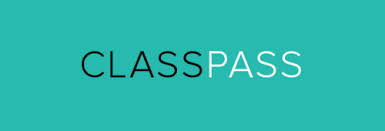ClassPass: the win-win platform connecting fitness studios with customers for $99/month

ClassPass, a service that offers unlimited gym classes for $99/month, has used the power of network effects to build an incredibly fast growing platform.

What is it?
ClassPass is a $99/month subscription service that allows users to book an unlimited number of gym classes for free. The benefit to customers is that they can try a number of different gyms /studios without being locked in to one. The benefit to gyms / studios is they get to fill their classes and potentially attract new customers who might consider purchasing a membership.
ClassPass was launched in early 2013 and has facilitated 1.5M class reservations in over twenty markets around the country (and raised $54M in 4 rounds). The ClassPass business model is to collect the $99/subscription fee from customers each month, and purchase bulk classes from their partner studios at a discount. Depending on the number of classes their users sign up for each month, ClassPass either loses money or makes a significant margin. The business model likely relies on having a mix of customers – I’m sure there are some they make money on and others they lose money on.
As ClassPass has grown really quickly, it has faced a few challenges along the way: 1) Tension between ClassPass users and studio members – either because classes are getting overcrowded, or because ClassPass users are new to a type of workout and therefore lower the skill level in the room or require more attention from the instructor. 2) Tensions between ClassPass users and studio members since they are paying significantly different prices per class. And 3) Because of these issues, some of the most popular studios have chosen not to join ClassPass (e.g., SoulCycle and YogaWorks).
Why are they winning?
ClassPass, after multiple product iterations, solved a basic need for both users and gyms with its platform. Gyms wanted to fill their classes and users wanted to try a number of different classes without being tied to one membership. Because ClassPass was the first player in this space, they were able to build up a number of users and gyms at the same time. Once someone signs up for a ClassPass subscription, they have an incentive to book classes with ClassPass, so the chance of them switching mid-month is very low. For most studios, they are paying the same amount to host each class (fixed price for rent, instructors, etc.), so if they can get any incremental revenue (even at a discounted price) to offset their fixed costs, they will.
How do network effects play a role?
ClassPass is effectively a platform that connects gyms and customers. The indirect network effects are that the more gyms join the platform, the more valuable it becomes for the customers, and vice versa. Luckily, ClassPass has done a great job growing both sides of the platform very quickly. In addition, as ClassPass signs up more and more users, the incentive for gyms to join ClassPass increases. Otherwise, they are missing out on this large population of potential customers who use ClassPass to find new studios every month. As ClassPass gains momentum, its value increases significantly, which is likely why it’s said to be worth $400M today.
How will they continue to succeed?
To maintain the momentum, ClassPass is more focused on improving its value proposition to studios than increasing its user base (I imagine, given the price point that they don’t have a hard time continuing to grow subscriptions). With studios, ClassPass is pilot-testing a feature that pre-pays studios for their classes (allowing them to buy new equipment, make improvements, etc.). They are also using data to help studios optimize their class schedule and figure out where to open new locations. In addition, they started a blog called “After Class” with webinars to help studios make better business decisions and they’re starting a database of fitness instructors who are looking for jobs and connecting them with studios.



Really interesting! I wonder if ClassPass will run into some of the same issues Groupon, LivingSocial, etc. saw with vendors seeing an increase in subsidized offerings but little corresponding increases in the same products at full-price. Given how my friends used it this summer, it was definitely a substitute for gym membership rather than the lead-source most of the gyms were likely hoping for.
I agree with David’s concerns about how ClassPass users may not become full-time gym users. I also wonder if the value of ClassPass will decrease over time as studios become saturated and users become frustrated with not being able to access the hippest gyms (i.e. the SoulCycles of the world). Or they may not be happy with the times offered. Also, is there a way for them to circumnavigate the problem of disintermediation? If at some point users stop using ClassPass and go directly to studios. Is this a problem they are at all concerned about?
The problem with the circumnavigation point you raised is that, in most cities where ClassPass creates a lot of value for their customers, studios are charging waaay more than $99/month for memberships. ClassPass offers a trial with top-notch facilities at a portion of the price one would have to pay for a complete membership at these studios. ClassPass customers are less likely to bypass the service to spend more (unless they want the gym’s other amenities, of course).
I completely agree with NoSocks on the sustainability of ClassPass’s value proposition. Although I had access to a gym this summer through my residence, I signed up for classpass because I wanted the variety that studios offer at times that worked for me. Having taken pilates and barre classes at studios that charge upwards of $35 per class (with access to saunas, steamrooms, and fancy aromatherapy products), I think that the ability to experience these workouts at a time that works for you- in whatever [major] city you are in, will be appealing for the ever-jet-setting millennial consumer.